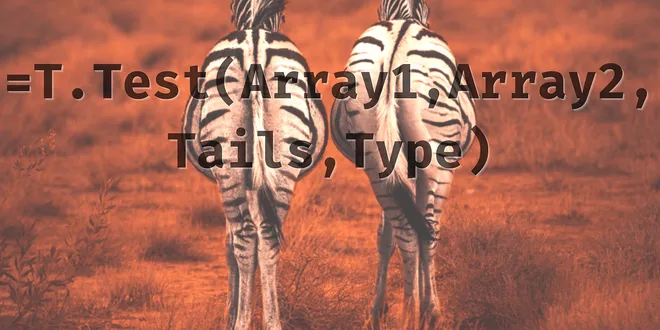T test
A t-test is a statistical method used to determine if there is a significant difference between the means of two groups. It is commonly employed in hypothesis testing to assess whether the observed differences in sample data reflect true differences in the population. The t-test is particularly useful when dealing with small sample sizes and when the population standard deviation is unknown. There are different types of t-tests, including one-sample, independent two-sample, and paired sample t-tests, each serving specific research scenarios. Understanding t-tests is essential for data analysis in various fields, including psychology, medicine, and social sciences.

The 3 t-tests for Data Scientists
A t-test is a statistical technique that tells one how significant a difference is between two groups is. In brief, it accomplishes this by comparing the amount of the signal (measured by the…
📚 Read more at Towards Data Science🔎 Find similar documents

All about T-tests— demystified
T-test is one of the most widely used test for hypothesis testing in the world of statistics. I have covered student's t test, paired t test and two sample t test
📚 Read more at Analytics Vidhya🔎 Find similar documents

T test in R
In this post, you will learn what a T Test is and how to perform it in R. First, you’ll see a simple function that lets you perform the test with just one line of code. Then, we will explore the intui...
📚 Read more at R-bloggers🔎 Find similar documents

Taking on T-Tests with SciPy
Ah T-Tests, one of the many ways to determine statistical significance. But what exactly are they? And how exactly does everything work? T-Tests, otherwise known as a Student’s T-Test, are a simple…
📚 Read more at Analytics Vidhya🔎 Find similar documents

T-test and Hypothesis Testing (Explained Simply)
Understand the concept and find how to avoid typical mistakes Photo by Andrew George on Unsplash Student’s t-tests are commonly used in inferential statistics for testing a hypothesis on the basis of...
📚 Read more at Towards Data Science🔎 Find similar documents

How to Use the T-Test and its Non-Parametric Counterpart
As a data scientist, you would do well to understand some statistics. After all, it is one of the building blocks of the field . This is the first article in a series which will attempt to give a conc...
📚 Read more at Towards Data Science🔎 Find similar documents

Student’s t-test in R and by hand: how to compare two groups under different scenarios
One of the most important test within the branch of inferential statistics is the Student’s t-test.1 The Student’s t-test for two samples is used to test whether two groups (two populations) are…
📚 Read more at Towards Data Science🔎 Find similar documents

t-Test : From Application to Theory
t-Test : From Application to Theory To bridge the gap between mathematical computations and programmatic implementation of a two-sample t-Test, this article provides a step-by-step guide using a prac...
📚 Read more at Towards Data Science🔎 Find similar documents

Why and How We t-Test
What Significance Testing is, Why it matters, Various Types and Interpreting the p-Value Photo by Girl with red hat on Unsplash Introduction When running experiments — be it with models, prompts, or ...
📚 Read more at Towards AI🔎 Find similar documents

The statistical analysis t-test explained for beginners and experts
Explanation step-by-step of the t-test so anyone can use it as a reference whenever they have to run the test or review the concepts.
📚 Read more at Towards Data Science🔎 Find similar documents

Parametric Tests — the t-test
In my previous article we went through the whats, hows and whys of hypothesis testing with a brief introduction on statistical tests and the role that they play in helping us determine statistical…
📚 Read more at Towards Data Science🔎 Find similar documents

A Comprehensive Guide to T-Tests in Excel
The t-test function in excel can be incredibly powerful. Without the coding necessary to operate Python or R, everyone can calculate the likelihood that two sets of data are actually different. This…
📚 Read more at Towards AI🔎 Find similar documents

